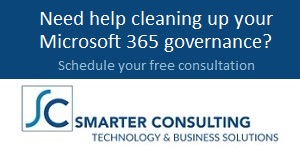Why using AI and Search are not the same
In the world of productivity tools, many of us default to familiar patterns: open a search engine, type a few keywords, scan the results, click a few links. That workflow has served us for years. But now with tools powered by artificial intelligence (AI), the game is shifting. And if we continue using them exactly the like old‑school search, we’ll miss their power and suffer in quality of outcomes.
 Search (think: standard web search) and AI tools (think: generative or conversational AI) might look similar from the user side (you ask a question, you get a response), but under the hood they’re very different.
Search (think: standard web search) and AI tools (think: generative or conversational AI) might look similar from the user side (you ask a question, you get a response), but under the hood they’re very different.
For example:
- Search engines index the web, match keywords (or increasingly semantic cues) to pages, then present you with links you must click, read and digest to get your answer.
- Generative/AI tools instead can use large‑language models (LLMs), understand intent, maintain context across a conversation, generate responses (not just retrieve links) and often expect the user to interact differently.
Because of this difference, when people treat an AI tool like a standard search tool (put in keywords, expect the same kind of browsing refresh) they often get sub‑optimal results. It’s like using a Swiss‑Army knife but only ever using it as a corkscrew; you’re missing the screwdriver, the file, the opener inside.
Here’s a closer look at why the mismatch creates friction and quality problems.
What differs, and why it matters
1. Retrieval vs. generation
Traditional search gets you to a page; you then read and extract the answer. AI tools can generate an answer directly, or synthesize from many sources. If you keep doing the “type keywords → scan results → click pages” approach, you lose the chance to use the strength of the generation model (e.g., summarization, context, follow‑up). As one user on Reddit put it:
“the AI tool allows users to drill down into these articles… the AI skips the step of the user finding the right article and reading it.”
2. Query style and intent
Search engines generally perform best when you craft reasonably precise phrases or keywords; you adapt your query when results don’t match. AI tools respond best when you ask fuller questions, provide context, allow follow‑ups, and treat the conversation as scaffolding. If you treat an AI like a search engine — give it terse keywords, expect list results — you under‑utilize what it can do, and you get shallow results.
3. Context, conversation and iteration
With AI you can build on previous responses (ask follow‑ups, refine). Traditional search is more one‑off: each query stands alone. If you don’t shift your behavior, you won’t take advantage of this conversational power, and the outcomes will feel like “the same old search inside a new tool.”
4. Quality of outcomes
Failing to shift your behavior means you might misuse the tool or force a search‑mindset onto an AI‑tool, which leads to:
- less deep insights
- more surface‑level answers
- less efficient workflows (because you’re not letting the model generate, you’re still doing the manual retrieval)
- increased risk of error (since you might trust an AI’s generated output without verifying sources)
One study estimated that workers using generative‑AI tools were 33 % more productive in each hour of use, but the aggregate productivity increase was only 1.1% because of limited adoption. That gap suggests that the tool can deliver much if used correctly, but if you don’t adapt your behaviour the potential remains untapped.
Another stat via the Federal Reserve shows AI uptake rates ranging from 5% to about 40%. That means many organisations are in the early phases, and likely many users are still in “search‑mindset” rather than “AI‑mindset.”
Combining these: the tool by itself isn’t a magic fix. Your approach must shift. If you don’t change how you work, you’ll just be schlepping your search habits into a shiny new wrapper. The quality of results suffers.
It’s about building muscle memory
There’s a bigger truth here: when technology changes, our habits need to adjust. But behaviour change takes time. For example, tech adoption moves in waves; transformation isn’t instantaneous. The long‑term productivity data (for general technology adoption) show that productivity growth has been weak in many developed economies. The productivity growth rate peaked in the early 2000s (~3%) and then slid to around 1% by 2015. So even when tools are available, taking the full benefit is slow.
In other words: you won’t flip a switch and become an AI‑whiz. It takes experimenting, building new routines, making mistakes, refining. The key is muscle memory for the new way of working: ask differently, think differently, use differently.
And when many people fail to shift, they continue doing search‑style even in an AI environment. The quality of results suffers, the ROI of the tool suffers, and the gap between possibility and reality widens.
Three tips to transition from search‑mindset to AI‑mindset
Here are 3 actionable best‑practices to help you build the new muscle memory and make the transition — so you’ll get higher quality results and greater productivity from AI tools, rather than forcing them into old patterns.
Tip 1: Ask full questions first, then refine.
Instead of typing a few keywords and scanning results, start with a more complete question: “What are the main differences between traditional search and generative AI tools, and when should each be used?” Then review the answer, ask a follow‑up: “Can you give me three real‑world business examples of misusing AI like search?” This builds context and depth. The shift: from “keywords → links” to “conversation → answer → refine.”
Tip 2: Use the “source‑check” habit.
Even though AI can generate answers, you still need to verify and critically evaluate outputs (especially for factual or business‑critical queries). Provide the AI with the request to cite sources and double‑check them. This builds trust and avoids shallow or incorrect results. It also helps you move beyond superficial list‑based search and into synthesis. (For example: ask the AI “please give me the source and link for each fact you mention.”)
Tip 3: Make it iterative and reflective.
After you get an AI answer, don’t stop: ask yourself “Does this answer cover my true need? What follow‑up questions arise? What part of it surprises me or feels weak?” Then ask the AI a follow‑up. Over time you’ll build a workflow: ask → review → refine → act. That pattern builds muscle memory and makes AI into your teammate, not just a fancy search box. You’ll shift from retrieving information to co‑creating insight.
By practising these, you’ll gradually tip your habits away from old‑school retrieval and into a richer, more interactive AI‑driven mode. That’s what unlocks higher quality results.
Making the shift
The shift from search to AI isn’t just about using a different tool on the screen. It’s about changing your behaviour, shifting your mindset and building new habits. If you keep doing the same thing you always did (search → click links → skim) you’ll get only incremental gains. But if you lean into the difference (ask full questions, iterate, verify, refine) you’ll unlock what AI can truly deliver.
Treat your AI tool as a collaborator, not a replacement for search. Give it context, challenge it, engage in follow‑ups, and check its work. Build the muscle memory now, because the future of information work isn’t just searching, it’s interacting, synthesizing and creating.
When you make that shift, the quality of your results, the speed of your insight, and the yield of the tool will all rise. And that’s worth the effort.




